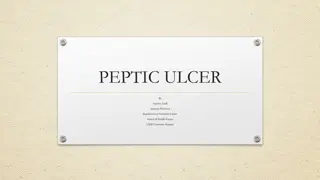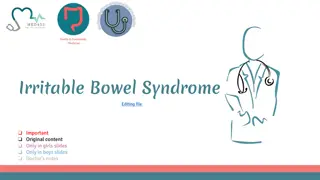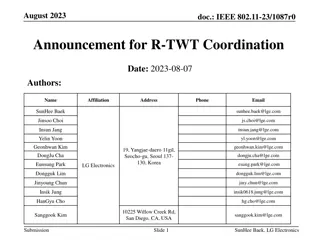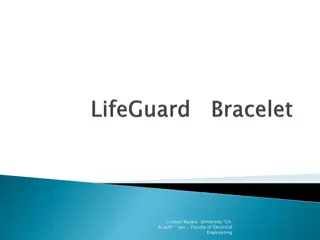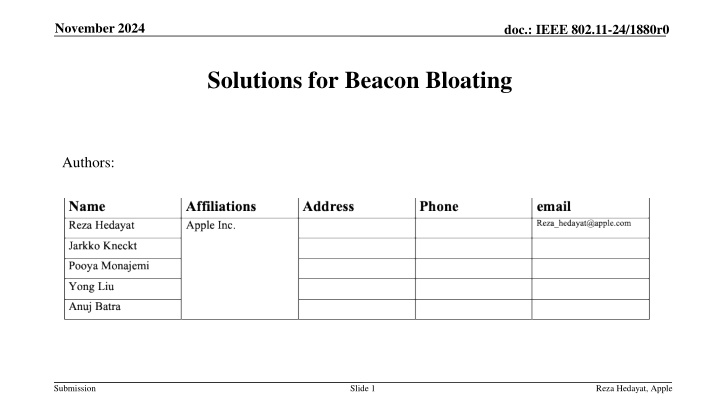
Solutions for Beacon Bloating in IEEE 802.11-24/1880r0
Addressing the issue of beacon frames bloating with each 802.11 generation, this document proposes solutions to manage beacon sizes and reduce channel inefficiency in wireless networks. The focus is on optimizing beacon content, introducing UHR parameters, and implementing short discovery mechanisms for unassociated STAs. These strategies aim to enhance network efficiency and minimize power consumption for associated devices.
Download Presentation

Please find below an Image/Link to download the presentation.
The content on the website is provided AS IS for your information and personal use only. It may not be sold, licensed, or shared on other websites without obtaining consent from the author. If you encounter any issues during the download, it is possible that the publisher has removed the file from their server.
You are allowed to download the files provided on this website for personal or commercial use, subject to the condition that they are used lawfully. All files are the property of their respective owners.
The content on the website is provided AS IS for your information and personal use only. It may not be sold, licensed, or shared on other websites without obtaining consent from the author.
E N D
Presentation Transcript
November 2024 doc.: IEEE 802.11-24/1880r0 Solutions for Beacon Bloating Authors: Submission Slide 1 Reza Hedayat, Apple
November 2024 doc.: IEEE 802.11-24/1880r0 Problem Statement Beacon frames grow by each 802.11 generation Pre-11be, or even pre-11ax, Beacon sizes of 300-400 bytes per BSSID are common 11be adds about additional 100-200 bytes If no Beacon design change in 11bn, more IEs would be added to Beacon frame Support of Multi-BSSID is mandatory in 6GHz With 2-7 BSSIDs, Beacon frame could get as large as 880 to 1700 bytes Due to large Multi-BSSID Beacons, enterprise AP vendors have resorted to temporary solutions, e.g. splitting multi-BSSIDs Beacon into multiple Beacons Channel inefficiency: Beacon frames consume more medium time Particularly when transmitted lowest MCS and when there are multiple BSSIDs per AP Large Beacons increase (associated/scanning) STAs power consumption Submission Slide 2
November 2024 doc.: IEEE 802.11-24/1880r0 Beacon Content Legacy approach: Include all the legacy IEs and UHR IEs in the Beacon frame No limit for Beacon bloating Candidate UHR Parameters: UHR Capabilities IE UHR Operation IE IEs that maybe defined in relation to newly-proposed UHR features: DSO NPCA DPS ELR Multi-AP Proposal: Do not add new UHR-related IEs in Beacon Short UHR capability bit(s) are added to the beacon A STA obtains the complete UHR parameters during Probing/Association Submission Slide 3
November 2024 doc.: IEEE 802.11-24/1880r0 Proposal UHR IE Classification Short discovery mechanism for unassociated STAs Repurpose a reserved bit in the Capability Info to indicated UHR BSS: UHR BSS (1 bit): indicates that the AP supports UHR Reduced Neighbor Report (RNR) signal also whether the reported AP supports UHR To obtain complete set of UHR parameters 1. An unassociated STA may send a (ML) Probe Request and obtain the complete set of UHR parameters from (ML) Probe Response 2. Or a STA may obtain the complete set of UHR parameters during authentication or association 3. Or as part of pre-roaming procedure, the STA may obtain a min set of capabilities of the UHR AP from its serving AP Submission Slide 4
November 2024 doc.: IEEE 802.11-24/1880r0 Proposal: UHR Parameters Update for Associated STAs Beacon frame signals critical BSS parameter change by: Setting BSS Critical Update flag to 1 Increasing BSS Parameter Change Count (BPCC) by 1. (BPCC value is modulo(256)) Associated STAs shall obtain the BSS parameters before the STA send data frames to the AP After a critical UHR parameter change, the Beacon (and unicast Probe Response) carry the updated UHR IEs for multiple DTIM intervals The updated UHR IEs are carried for multiple DTIM intervals, to make sure associated STAs that may be in power save also obtain the updated IEs from Beacon frame. For efficiency, only the updated UHR IEs are carried Proposal: To efficiently help associated STAs that modified UHR IEs are carried, we propose to define a separate critical update flag, by repurposing a reserved bit in the Capability Info, to indicate that the Beacon frame carries the UHR IEs Note: Per baseline spec, a STA may exchange ML Probe Req/Response to acquire modified UHR parameters. However, this is less desirable due to additional STA power consumption. Submission Slide 5
November 2024 doc.: IEEE 802.11-24/1880r0 Summary Increasing Beacon size over many 802.11 generations is a problem, and it will become even worse in upcoming generations 802.11bn shall provide means for beacon size reduction for UHR and all following 802.11 generations The proposal is: 1) to add to Beacon frame a short indication of presence of a UHR BSS, and 2) avoid adding static UHR BSS parameters to Beacon. A STA may obtain the UHR parameters during probing or association. Submission Slide 6
November 2024 doc.: IEEE 802.11-24/1880r0 Straw Poll 1 Do you agree that no UHR defined elements carrying static BSS parameters are included in Beacon frames, except for a field indicating that the AP is a UHR AP o The UHR BSS parameters are obtained by STAs pre-association through Probe Response and (Re)Association Response frames o Whether certain dynamic BSS parameters can also be excluded is TBD Submission Slide 7
November 2024 doc.: IEEE 802.11-24/1880r0 Straw Poll 2 If there is a change to one or more UHR parameters, then a UHR AP provides an indication of the update. The indication that an update exists follows a similar TGbe mechanism, but using a different (TBD) set of fields It is TBD how UHR non-AP STAs obtains the updates. Submission Slide 8
November 2024 doc.: IEEE 802.11-24/1880r0 References [1] 23-1938r1: Beacon design with and without multiple BSSID support, Liwen Chu Submission Slide 9









